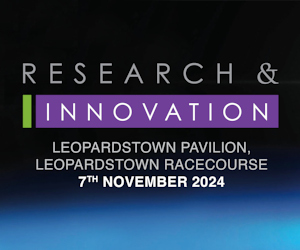Scientists Discover New Cellular Process Leading to Lung Fibrosis

Scientists in Trinity College Dublin have identified a new process that causes scarring in the lungs of patients with idiopathic pulmonary fibrosis (IPF). The research was led by Professor Padraic Fallon, School of Medicine, Trinity College Dublin and was an international collaboration with scientists from University College Dublin, MRC-LMB Cambridge, the University of Edinburgh, and the University of Erlangen. The study was published in the Proceedings of the National Academy of Sciences.
Pulmonary fibrosis arises as a result of excessive scarring (fibrosis) of the lung tissue and is associated with shortness of breath. IPF is a progressive chronic condition for which there are very few effective therapies available and consequentially there is a poor prognosis. Despite extensive investigation, the causes underlying IPF remain unknown although it has been linked with exposure to cigarette smoke and other environmental factors such as occupational exposure to gases, chemicals and dust. It is hypothesized that chronic and repeated injury to lung cells, in particular alveolar epithelial cells, results in the release of pro-fibrotic factors such as transforming growth factor β (TGF β). These factors induce fibroblasts to release collagen that leads to scaring of the lungs tissue and thereby compromising the function of the lungs.
In this new study the authors have used animal models of lung fibrosis to show an increase in expression of a cytokine, interleukin-25 (IL-25), in the lungs with the development of pulmonary fibrosis being dependent on the presence of IL-25. In addition, a new role for a novel immune cell type, the type 2 innate lymphoid cell (ILC2) previously discovered by Professor Fallon and colleagues, in the initiation of fibrosis was described. It was also shown that the ILC2, induced by IL-25, cells themselves can induce collagen deposition in the lung via the release of pro-fibrotic factors such as IL-13.
To address the relevance of these findings to human disease a cohort of patients with pulmonary fibrosis were recruited from clinical collaborators Professor Seamas Donnelly (St Vincent’s Hospital and University College Dublin), Dr Nikhil Hirani (University of Edinburgh) and Dr Ruairi Fahy (St James’s Hospital). Lung biopsies samples were recovered from patients at initial diagnosis and on follow-up visits to assess progression. High levels of IL-25 in the lungs of patients at initial IPF diagnosed were associated with disease progression. Furthermore, a population of ILC2 was also present in the lungs of IPF patients but not control patients.
These discoveries open up a new perspective on how scarring develops in the lungs of people, as well as in other sites of the body, and further identifies potential avenues to develop therapies.
Professor Padraic Fallon, Science Foundation Ireland Stokes Professor of Translation Immunology who led the study commented: “We have highlighted in laboratory models and in patients how the immune system can malfunction to stimulate specific cytokines and novel cell types that can lead to tissue damage which, in the context of this study, can induce lung fibrosis. We are now addressing how we can reverse such tissue scarring and identify why there are differences in severity of pulmonary inflammation and fibrosis between patients with lung diseases, such as IPF and asthma.”
Professor Mark Ferguson, Director General, Science Foundation Ireland which funded the research jointly with the National Children’s Research Centre, and Chief Scientific Adviser to the Government of Ireland commented: “Pulmonary fibrosis is a devastating condition, with few treatment options. Professor Fallon’s research results provide a new understanding of the disease process and suggest new targets for future potential therapies – an example of excellent scientific research with potential future health and economic impacts.”
These studies may have broader implications to human disease. Professor Fallon and Wellcome Trust funded scientist Dr Sean Saunders in collaboration with Professor Graham Ogg (University of Oxford, UK) and Dr Andrew McKenzie (LMB Cambridge, UK) also just published this month in the leading medical peer-review journal The Journal of Experimental Medicine studies that implicate ILC2 and IL-25 in the development of atopic dermatitis (eczema) in patients. The first author of the Proceedings of the National Academy of Sciences paper Dr Emily Hams from Trinity College Dublin has also recently implicated a function for these cellular responses in regulation of obesity. These new studies raise the potential for therapies targeting the initial responses that evoke aberrant inflammation that leads to a range of major human inflammatory diseases.
The research was funded by Science Foundation Ireland and the National Children’s Research Centre.








There are no comments at the moment, do you want to add one?
Write a comment